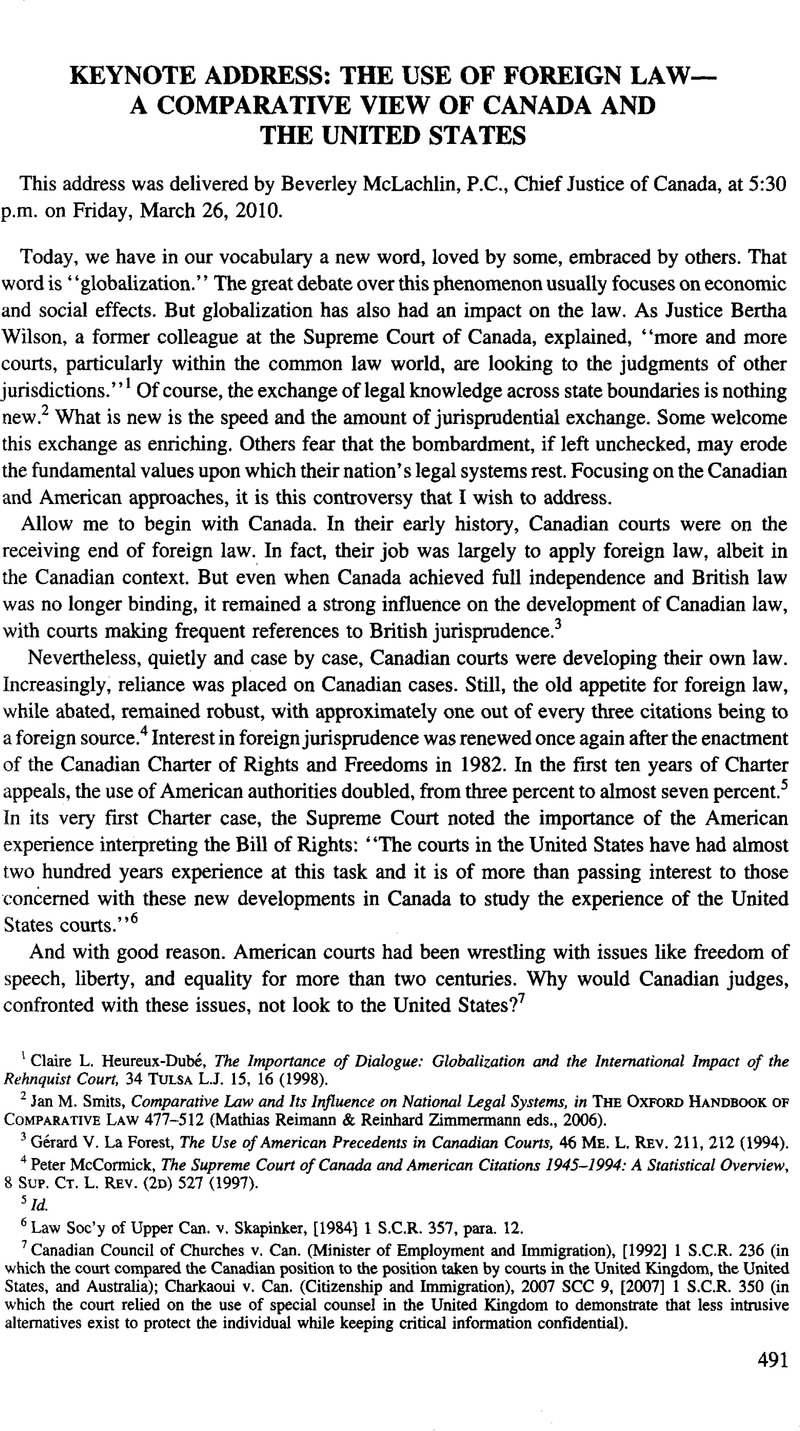No CrossRef data available.
Published online by Cambridge University Press: 28 February 2017

1 Heureux-Dubé, Claire L., The Importance of Dialogue: Globalization and the International Impact of the Rehnquist Court, 34 Tulsa L.J. 15, 16 (1998)Google Scholar.
2 Smits, Jan M., Comparative Law and its Influence on National Legal Systems, in The Oxford Handbook of Comparative Law 477–512 (Reimann, Mathias & Zimmermann, Reinhard eds., 2006)Google Scholar.
3 Forest, Gérard V. La, The use of American Precedents in Canadian Courts, 46 Me. L. Rev. 211, 212 (1994)Google Scholar.
4 McCormick, Peter, The Supreme Court of Canada and American Citations 1945-1994: A Statistical Overview, 8 Sup. Ct. L. Rev. (2D) 527 (1997)Google Scholar.
5 Id.
6 Law Soc’y of Upper Can. v. Skapinker, [1984] 1 S.C.R. 357, para. 12.
7 Canadian Council of Churches v. Can. (Minister of Employment and Immigration), [1992] 1 S.C.R. 236 (in which the court compared the Canadian position to the position taken by courts in the United Kingdom, the United States, and Australia); Charkaoui v. Can. (Citizenship and Immigration), 2007 Scc 9, [2007] 1 S.C.R. 350 (in which the court relied on the use of special counsel in the United Kingdom to demonstrate that less intrusive alternatives exist to protect the individual while keeping critical information confidential).
8 R. v. Keegstra, [1990] 3 S.C.R. 697, 738.
9 Id. at 740.
10 See Brown v. United States, 12 U.S. (8 Cranch) 110 (1814); Dred Scott v. Sandford, 60 U.S. (19 How.) 393 (1857); Hurtado v. Cal., 110 U.S. 516 (1884); Julliard v. Greenman, 110 U.S. 421 (1884); Youngstown Sheet & Tube Co. v. Sawyer, 343 U.S. 579, 651-52 (1952); Trop v. Dulles, 356 U.S. 86 (1958); Culombe v. Conn., 367 U.S. 568 (1961); Miranda v. Ariz., 384 U.S. 436, 486-89 (1966).
11 O’Connor, Sandra Day, Keynote Address, 96 ASIL Proc. 348, 350 (2002)Google Scholar.
12 Knop, Karen, Here and There: International Law in Domestic Courts, 32 N.Y.U. J. Int’l L. & Pol. 501, 531 (2000)Google Scholar.
13 Lawrence v. Tex., 539 U.S. 558, 598 (2003).
14 Anderson, Kenneth, Foreign Law and the U.S. Constitution, 131 Poly Rev. 33 (2005)Google Scholar.
15 Court in Transition: From the Hearings, N.Y. Times, Sept. 14, 2005, at A26.
16 Anderson, supra note 14, at 47-49.
17 Blum, Louis J., Mixed Signals: The Limited Role of Comparative Analysis in Constitutional Adjudication, 39 SAN Diego L. Rev. 157, 163 (2002)Google Scholar.